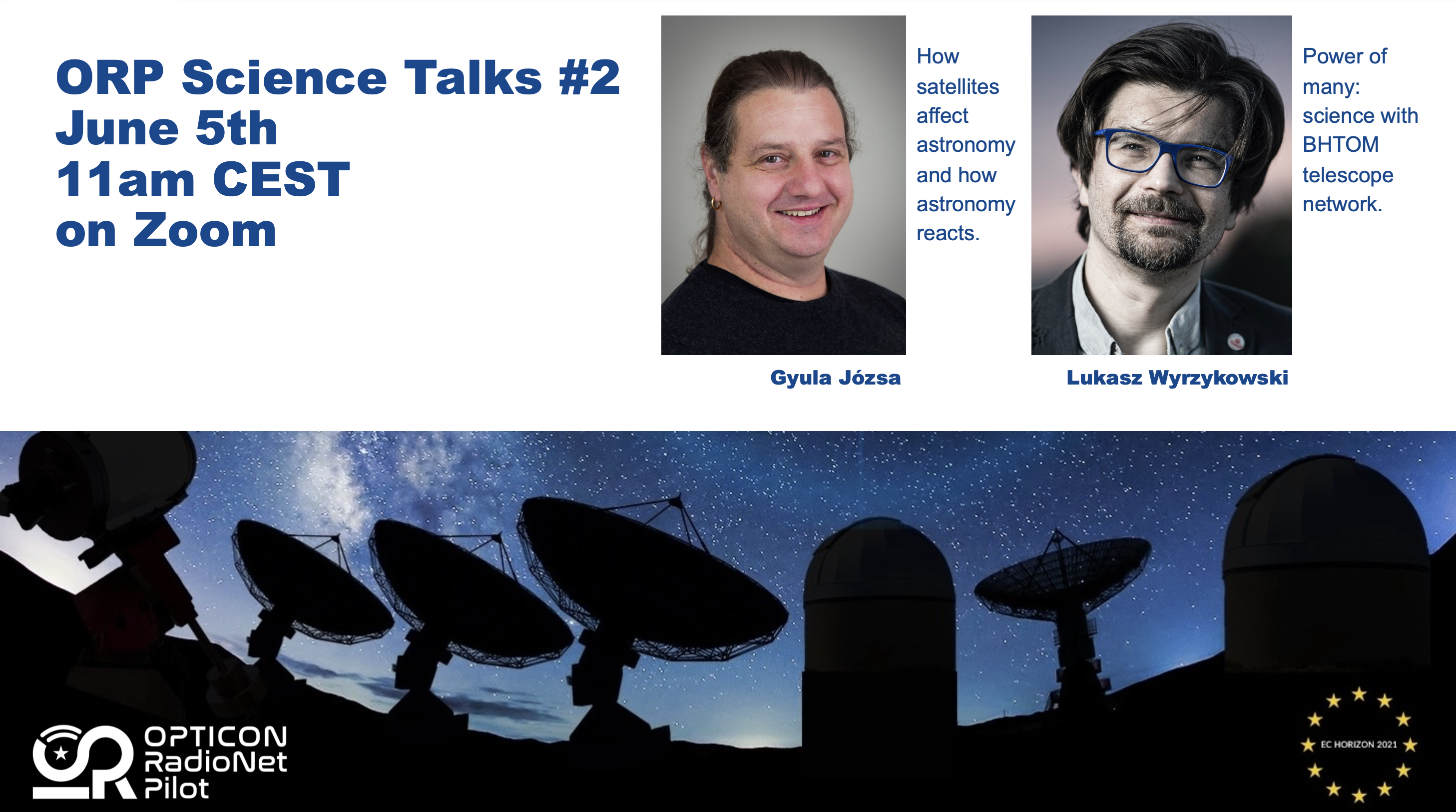
The second session of the "ORP Science Talks" will take place on June 5 at 11am CEST, featuring Gyula Józsa and Lukasz Wyrzykowski. You are welcome to join by clicking here!
ORP Science Talks take place approximately every month on Zoom, providing the community (ORP and hopefully beyond) with the opportunity to present their work and scientific results. ORP members, share feedback on the ORP Science Talks or nominate yourself as a speaker at this virtual meeting with an email to outreach@orp-h2020.eu.
View recordings of the talks from the previous session here.
Short descriptions of the next speakers' talks:
How satellites affect astronomy and how astronomy reacts
Gyula Józs
Payload has become cheap, hence the number of satellites in low earth orbit is exploding. This has a very negative impact on astronomy. Satellites reflect sunlight in the night and hence contaminate optical observations, but they also radiate in the radio regime: the business model is to provide broadband connectivity all across the globe. While the remoteness of observatories was a major factor to reduce the impact of anthropogenic electromagnetic interference in the past, this becomes more and more difficult. As a reaction, astronomers have funded the Centre for the Protection of the Dark and Quiet Sky from Satellite Constellation Interference (short: CPS), to which the ORP contributes significantly. Two major examples that I will report on is the position paper of the CPS, as well as the measurement of unintended electromagnetic radioation with LOFAR. In addition I will briefly describe the environment within which we attempt to mitigate the impact of anthropogenic electromagnetic radiation on astronomy.
Power of many: science with BHTOM telescope network
Lukasz Wyrzykowski
The Black Hole Target and Observation Manager (BHTOM, bhtom.space) is a platform maintained under the ORP contract for the coordination of time-domain observations. It accepts requests for targets for long-term or rapid photometric monitoring, such as transients, microlensing events, quasars, variable stars, and extrasolar planets, and collects data from a heterogeneous network of a 100 telescopes from around the globe. The observations from the telescopes are automatically processed and standardised in BHTOM in order to provide science-ready data.
I will present the system, its capabilities and the scientific results obtained so far. In particular, I will present studies of microlensing events and the search for lensing black holes in the Milky Way based on Gaia Alerts and long-term photometric coverage from BHTOM telescopes. I will also present other use cases of BHTOM for quasars, supernovae and cataclysmic variable studies.